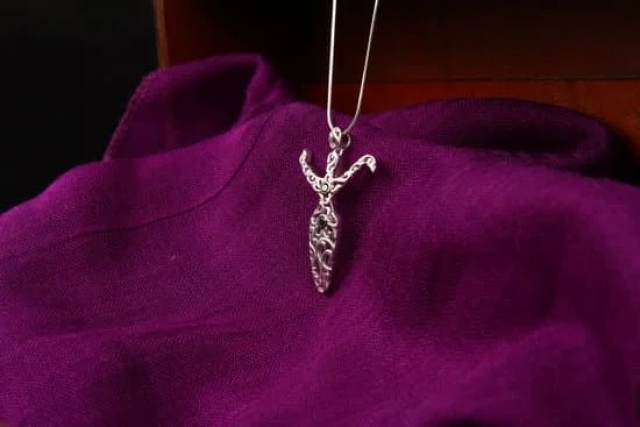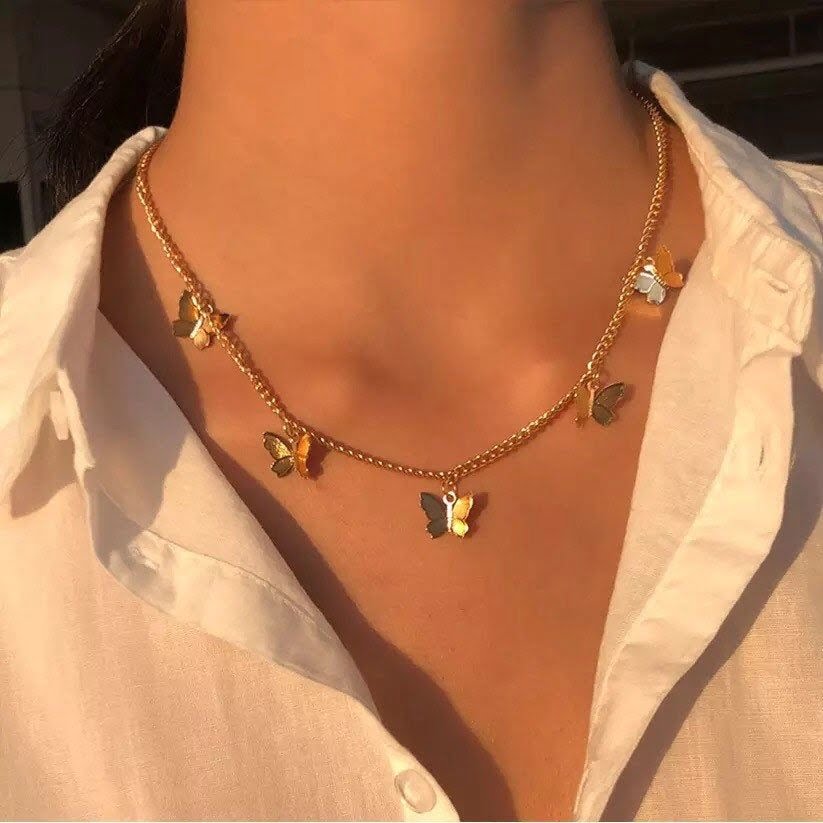Rhinestone jewelry is a popular and attractive accessory. But when rhinestones go missing, repair isn’t always easy and it can be frustrating. Fortunately, with the right tools and a bit of patience, it’s entirely possible to learn how to repair rhinestone jewelry.
To effectively tackle this task, you will need an array of materials such as metal pliers, tooth picks or tweezers, epoxy glue or drying glue, metal filings and a magnifying glass. Additionally, you will need to use pinpoint accuracy for picking up and placing the individual stones in their allotted spaces.
The first step in repairing rhinestone jewelry is to find suitable replacement stones that match the color, shape and size of your broken stone. Once you have the correct stones chosen it’s time to start attaching them with an adhesive such as epoxy or drying glue.
It is important that the adhesive doesn’t seep into crevices or other areas of the stone where it won’t be visible but still compromise its structural integrity. To adhere to stones correctly use metal pliers to slightly stretch open prongs on either side of the setting hole so they can securely hold onto each stone once glues has dried completely.
Once your new stones are firmly attached, inspect your newly repaired item closely using a magnifying glass and make sure everything is solidly intact before putting your item back into wear rotation. If tinkering around with precious metals isn’t something you feel comfortable doing then it may be best contact local jeweler who can tips on proper care and maintenance procedures for rhinestone jewelry as well professionally assist with any repairs its needed moving forward.
Knowing how to tell if you have quality material designed for durability will help save time and money long after repairs are made since cheap alternatives won’t last nearly as long with frequent wear as more prestigious brands so do your due diligence when refurbishing personalized pieces or gifts received from others.
Gather Materials and Equipment
When attempting to repair a broken piece of rhinestone jewelry, it is important to have the right materials and equipment. Depending on the type of damage and the material used to create the jewelry, craft stores or online retailers may offer various kits designed for repairing rhinestone jewelry. The kits typically include a variety of items such as tools, adhesives, cleaning agents and more.
For those who prefer not to use a kit or need specific tools not included in their purchased kit, there is still much that can be found at local hardware stores or craft stores. The glue used is key in repairing rhinestone jewelry; it needs to be both strong enough to hold the pieces together but delicate enough so as not to damage any of the delicate stones.
A bead tip adhesive glue works well when working with this type of jewelry but findings that bonds plastics or heavy-duty epoxy are also acceptable solutions.
Just like using the right adhesive glue, having the right tools is essential during repairs. These items should include tweezers that can be used to hold tiny pieces in place while gluing them back together. A pair of pliers with white rubber cushion covers are also beneficial as they can help get a tight grip on small pieces without leaving marks on soft metals.
Their cushions act as a shock absorber around delicate beads and chains too helping protect them from additional wear and tear due to tight grips being made on them when piecing broken jewelry back together again. Additionally an old soft cloth will come in handy for cleaning away any mediums such as old glue or cleaning solutions left behind during repairs.
Repairing rhinestone jewelry can fun and rewarding especially when done properly by following all safety protocols needed when dealing with tools, adhesives and chemicals. Having the correct materials and equipment ensures no further damage is caused while keeping all precious gems safe during repair time too meaning you always have your beautiful blingy piece back at its best.
Inspection and Cleaning
Inspecting rhinestone jewelry for damage can be very tricky if you are not a trained professional. Properly evaluating rhinestone pieces is important for determining the next steps to take when it comes to repair. When examining a piece, look closely at the glue joints, metal plating and clasp components in order to determine any signs of deterioration from wear and tear, improper cleaning or rough handling. Small cracks or loose stones are common indications that repairs may be necessary.
Once you have determined that repairs are needed, the first step is to properly clean the jewelry before beginning any repairs. Using a soft cloth like chamois will help avoid scratching the surface of the piece and adding dirt to any cracks or crevices that need to be repaired.
Avoid using any abrasive substances as they may cause damage to the metal plating or delicate stones. If necessary, dampen the cloth slightly with water; this will make it easier to spot dirt on or between each stone’s setting as well as crack where glue has broken down over time.
After proper cleaning has been completed, inspect adhering surfaces for durability once more for best results in finding successful repair solutions. If there is minimal dirt present and adhering surfaces appear intact, applying stronger glue may provide an easy fix along with re-tightening any clasps where necessary.
For larger weak spots or severe corrosions of metal plate frames common among vintage pieces, there are specialty maintenance methods like ultrasonic baths which can remove oxidation as well chemical treatments specifically designed for these types of materials that provide extra strength after treatment.
Repairing Prongs
Rhinestone jewelry can be a beautiful addition to any collection. Unfortunately, it can also be fragile and prone to damage, making it important to know how to repair rhinestone jewelry that has become damaged or broken in order to keep the piece looking its best.
One of the most common issues with rhinestone jewelry is when prongs become bent or broken, which can easily happen if the piece is not handled carefully. Repairs are easy enough to do at home and with the right supplies can quickly remedied.
The first step to replacing damaged prongs is remove any dirt or debris from around the stone and carefully inspect the damage. Any remaining protruding metal should lightly sanded down until flush with the jewelry surface with fine grit sandpaper, so that when new prongs are put in place they will lay flat and secure.
Next, choose a replacement material for the new prong tips; these tend too either wire or sheet metal material, although for some pieces other metals such as gold have been used successfully. Make sure that whatever replacement material being used is of good quality so as not to affect the integrity of your jewelry piece over time.
Finally, bend the replacement material into small U-shapes so that they will fit snugly against the stone’s edge when inserted into place and glue them using a jeweler’s adhesive designed specifically for use with gems and rhinestones. Allow adhesive ample drying time before gently pressing each prong into its proper position on each side of the stone then testing its integrity by examining closely how firmly it sits against the gem’s edges.
If necessary, you can set them further still with a pair of tweezers by gently adjusting each corner one at a time until desired results are achieved without fear of cracking or breaking any pieces – leaving you with a beautiful adorned repaired piece just like new.
Re-setting Stones
When the glitz and glamour of a rhinestone piece of jewelry starts to fade there is still hope to restore it back to its former glory. One of the most common types of repairs that need to be made to rhinestone jewelry are stone replacements. To ensure your repaired jewelry looks like new, it is important you know how to correctly place and secure the replacement stones.
The first step in this process is obtaining an appropriate replacement stone from your local jewelry store or craft supplier. Make sure it matches the size and shape of the original stone as closely as possible. When selecting a single stone for a multi-stone setting always keep in mind what colors and sizes look best when grouped together. Once you have a perfect replacement it’s time to move on to setting it.
To properly re-set a rhinestone you will need adhesive, tweezers, and a few other tools that can usually be found at any home improvement store or craft supplier, such as magnifying glasses, wire cutters, and small scissors. Begin by applying a small amount of adhesive onto the backside of your chosen replacement stone then carefully use tweezers to gently place and position it into the desired spot in your Rhinestone Jewelry piece.
You may want to lightly dab some glue onto the crevices surrounding the new stone once all pieces are in place if desired.
When finished let all components thoroughly dry before returning your newly re-set Rhinestone Jewelry piece back into an everyday wear rotation. This helps add durability so enjoy showing off that sparkle for years to come.
If more precision is needed for tricky settings consider using tweezers with fine tips so that picking up tiny stones becomes easier without damaging them as much as standard tweezers would do. If any excess glue spilling over onto visible parts can also be removed with fine-tip tweezers dipped into rubbing alcohol solution – instantly clearing up any blemishes instead or having them stand out under light sources or when worn outdoors.
With proper handling your Rhinestone Jewelry should last many decades longer than if left unrepaired; restoring former beauty and providing excellent results every time these handy DIY techniques are employed.
Straightening Bent Prongs
If you have a piece of rhinestone jewelry with bent prongs, it can be fixed in just a few simple steps. First, try to work the bent prong back with your fingers. Gently move it back and forth while pushing it away from the stone.
If it is still too difficult to bend back by hand, you will need some additional tools such as small pliers or tweezers. While using these tools, ensure that you are only squeezing the actual prong and not near any stones attached to your jewelry. Also, make sure that there is no slipping; this could cause danger to the stone if it were squeezed too tightly.
Once the prong has been straightened out successfully, check for any loss of metal in order to assess damage. If there is metal loss, the best solution would be to take the item to a jeweler so they can perform repairs and reinforce those weak points in order to ensure durability and longevity of your cherished piece of rhinestone jewelry.
By taking extra care in bending back bent prongs instead of trying drastic measures like soldering or glueing yourself, you can preserve its original state and prevent further destruction.
The next step would be cleaning up loose stones due to an insecure setting. You should first use a soft cloth or paper towel with a little bit of water and gently dab around the setting where needed; this should remove dirt that is built up around the perimeter of your stone or any other kind of debris. You could also try rubbing alcohol on a cotton swab if water fails to clean effectively enough.
Be careful not to rub too hard near any stones as it may slip out easily if moved too much. Once this process is complete, simply check again for any sign of damage and recutting might be necessary in some cases depending on how serious were changes were made during fixing process and how much was lost during it all – but often times fixings like these will not take more than couple minutes at most.
Finishing Touches
One of the most important steps in repairing rhinestone jewelry is to give it a nice polish and buffing. This step is instrumental in making sure the piece looks as good as new when you’re all done with your repair work. There are a variety of ways that you can go about polishing and buffing your newly-repaired rhinestones, depending on the materials being used and the goal that you have in mind.
For simple cleaning and polishing, jewelers often use electro-chemical processes like ultrasonic cleaning or ion exchange treatments. These help to remove dirt and other debris that may be stuck to the metal backing of your stone setting. After this, either high speed buffers or abrasive compounds can be used for a thorough polishing process. The combination of both options will help to deliver a gleaming, smooth finish to any rhinestone jewellery item after repair.
Finally, if you want an extra sparkly shine for your freshly-repaired items then opt for silver or gold plating after buffing and cleaning. Placing a protective plating over any rhinestone product means that dirt won’t be able to lodge itself into any available crevices or around any joints of the piece’s fasteners like wires or clasps; which helps protect them from further damage over time.
Failure to properly protect the metal backing could result in fading colours over years of exposure to different elements, which could eventually lead to deterioration and tarnishing.
Professional Rhinestone Jewelry Repair Resources
Rhinestone jewelry repair is a delicate task, and it is best to leave the job to a professional. Jewelers have access to specialized tools, like tweezers, glue guns and clamps, which can properly and securely affix rhinestones back onto the jewelry piece.
The benefit to finding a professional jeweler rather than attempting repairs yourself is that the jeweler has experience working with fragile materials like rhinestones and will be able to make sure that their finished product looks better than ever before.
When looking for a professional jeweler to do your repairs, it is important to find one with experience in rhinestone jewelry repair. Research online for reviews or ask friends who may have had good experiences getting their jewelry done at a certain shop. It’s also helpful to get quotes from multiple shops so you can find the one with the best price and services.
When bringing in your jewelry pieces to get fixed, bring photos of how they originally looked as reference-pieces for both you and the jeweler when discussing what needs fixing. Listen carefully to instruction on how to take care of your new repairs over time – most jewelers suggest using alcohol-free cleaning products only after each use and storing the pieces separately in cushioned holders or fabric pouches when not being worn.
Utilize these tips, however simple they may seem, as they will help extend the life of your fine jewelry items so they can continue shining beautifully season after season without needing much attention beyond an occasional gentle cleaning.
Conclusion
Rhinestone jewelry can last a lifetime if it is properly maintained and taken care of. Thankfully, there are several easy steps you can take to help repair rhinestone jewelry. First, you’ll need to identify any loose stones by carefully examining all parts of the piece. If a stone is missing, you’ll need to replace it with a new one that matches the original design.
Once you have sourced the correct size, shape, and type of rhinestone, use tweezers or needle-nose pliers to attach it securely in its place. To ensure the longevity of the stone, always use clear glue or resin. Finally, if your jewelry has become tarnished or discolored over time due to wear and tear, use a polishing cloth to restore its shine.
With these tips for repairing rhinestone jewelry in mind, you’re sure to have your favorite piece looking good as new in no time. These methods are simple enough that anyone can attempt completing them on their own without professional help-all while avoiding costly trips to the jeweler’s shop.
Other than identifying and replacing any loose stones that may have come out of your piece during normal wearing and storage routines, ensuring that each one is glued securely in its place should also help strengthen your pieces and keep them safe from further damage or loosening. Keep an eye out for tarnished settings or components as well-light polishing with a cloth will restore their luster quickly.
In short, repairing and maintaining rhinestone jewelry require few basic steps-familiarizing yourself with each and practicing often will definitely be beneficial. Identifying damaged areas such as loose stones quickly makes it easier for anyone to perform their own DIY repairs before things get overly complicated and expensive-ensuring that they can enjoy their favorite piece of statement-making jewelry without interruption until they choose otherwise.

Welcome to my jewelry blog! My name is Sarah and I am the owner of this blog.
I love making jewelry and sharing my creations with others.
So whether you’re someone who loves wearing jewelry yourself or simply enjoys learning about it, be sure to check out my blog for insightful posts on everything related to this exciting topic!





